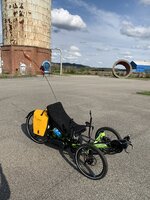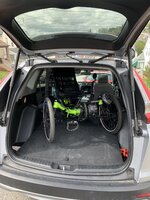Hello everyone,
I am very interested in an electric trike and have a few practical questions. For background, I have a 2 wheel non electric bike and previously rode a 2 wheel electric bike. I have ridden trikes before and think that an etrike would offer a unique riding experience. I am about 5’3’’.
1. Most of the riding will be on the GAP trail in western PA, some paved sections with yellow lane lines and many pea gravel sections. Very minimal riding near roads (just learned to ride a bike 2 years ago as a middle aged person). Can a 30-31 inch wide trike fit comfortably on these rail trail paths? Where do most people ride their trikes?
2. I am looking to use the back of my Honda CRV for transport, so looking at a folder like the Lectric XP trike or a trike with a divisible frame such as Rad trike or a Van Raam model. Is anyone aware of other trike brands that offer a divisible/split frame? This seems like such a great feature, and the companies that offer it seem to bury the information in the specs!
I would really appreciate any information, and would love to hear about your experiences.
Thanks,
Amy
I am very interested in an electric trike and have a few practical questions. For background, I have a 2 wheel non electric bike and previously rode a 2 wheel electric bike. I have ridden trikes before and think that an etrike would offer a unique riding experience. I am about 5’3’’.
1. Most of the riding will be on the GAP trail in western PA, some paved sections with yellow lane lines and many pea gravel sections. Very minimal riding near roads (just learned to ride a bike 2 years ago as a middle aged person). Can a 30-31 inch wide trike fit comfortably on these rail trail paths? Where do most people ride their trikes?
2. I am looking to use the back of my Honda CRV for transport, so looking at a folder like the Lectric XP trike or a trike with a divisible frame such as Rad trike or a Van Raam model. Is anyone aware of other trike brands that offer a divisible/split frame? This seems like such a great feature, and the companies that offer it seem to bury the information in the specs!
I would really appreciate any information, and would love to hear about your experiences.
Thanks,
Amy

